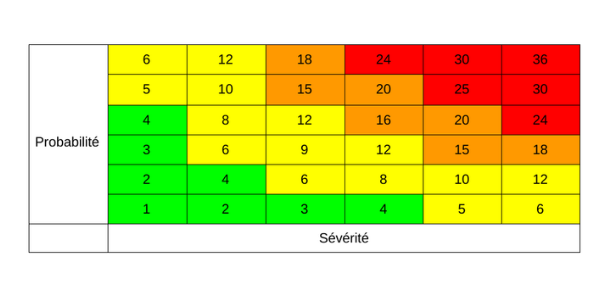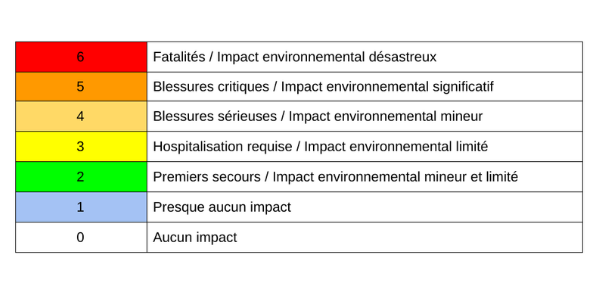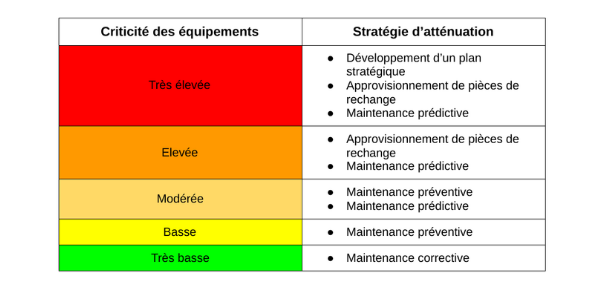Criticality analysis: what is it and why is it important?

Criticality analysis is defined as the process of assigning assets a criticality score based on their potential risk of failure.
What is criticality analysis?
Criticality analysis is defined as the process of assigning assets a criticality score based on their potential risk. Risk is defined as "the effect of uncertainty on objectives"; according to ISO 31000: 2009 - Risk management - Principles and guidelines. Since it cannot really be quantified; risk; in this case; is considered as all the possible ways in which assets can fail and the effects that this failure can have on the system and the operation as a whole. Given this; criticality analysis is closely related to a failure modes and effects analysis (FMEA) and a failure modes; effects and criticality analysis (FMECA); which will be discussed later. Once a criticality analysis has been performed; an FMEA is typically performed on the most significant 20% of the most critical assets.
What is the purpose of criticality analysis?
So why is criticality analysis important? You hear about criticality all the time - doing a criticality analysis to prioritize assets for a total productive maintenance (TPM) plan; a condition-based monitoring program or a root cause analysis on high-priority equipment. Criticality plays a role in almost every type of maintenance. It comes down to risk and what makes each piece of equipment critical. Criticality analysis allows you to understand the potential risks of the asset that could impact your operation. This ensures that reliability is examined from a risk-based lens rather than from each individual's opinion.
According to the Life Cycle Institute, a criticality analysis model should cover several areas of your organization, including:
- Customer impact
- Impact on safety and the environment
- Ability to isolate single faults
- History of preventive maintenance (PM)
- History of corrective maintenance
- Mean time between failures (MTBF)
- Delivery time for spare parts
- Probability of failure
Because the criticality model addresses multiple areas of an organization, a criticality analysis must be an enterprise-wide effort. Involving departments that deal with operations; engineering; maintenance; purchasing; and health and safety ensures that the analysis considers all operational functions as a whole. You need to understand that risk may be defined differently across different teams. Having a diverse team contributes to the subjectivity of risk attribution.
Criticality analysis is also important because it can be used in a variety of scenarios within an organization. Some of these scenarios may look like this:
- A criticality score can be used as an input to help determine the final priority ranking for maintenance tasks, which in turn can be used with the work order priority.
- Helps identify high-level risk mitigation strategies for specific equipment. For example, this could involve the application of a condition monitoring technique to high criticality assets. Predictive Maintenance.
- Assist in determining the optimal number of spare parts for each piece of equipment.
- Provided valuable input for budget discussions; so that high criticality equipment receives higher priority for upgrades or replacement.
- Criticality analysis helps reliability engineers focus their efforts and energy on the most critical assets.
How to perform a criticality analysis
It is important to note that there is no definitive approach to conducting a criticality analysis. Here are two widely used methods; a simplistic approach to get started and an in-depth method.
So where should you start? Many organizations simply want to know which assets should be included in a criticality assessment. Instead of assuming that all of your assets are critical; make a list of the key assets that your team considers critical and calculate the cost of downtime and repairs. You may be surprised by the results. For example, you may have hundreds of engines in constant motion; that's critical enough; but the most critical asset is the boiler that produces steam to keep those engines moving.
Since the goal of this approach is to find a good starting point, let's look at some steps you can take to get a criticality plan started.
- Compile a list of assets to be cut that will not exceed 20% of all assets. The best practice for this is a ratio of 5 to 1 or higher.
- Establish a team of personnel from the operations, maintenance; engineering, and purchasing sides of the organization to conduct a plant equipment survey. Equipment operators should also be included in this team.
- Next, rank the criticality of assets using an established formula. Lifetime Reliability Solutions uses the following formula to determine the financial impact of an asset: Equipment Criticality = Failure Frequency (per year) x Cost Consequence ($) = Risk ($ per year). The cost consequence in this formula is the cost of lost production plus repair costs. For example, if you have a large number of identical machines; the machine downtime may be 400 $ per hour per machine.
Now that you have a basic idea of how to get started; let's look at a more thorough and streamlined approach to criticality analysis. This method involves three steps: agree on the risk matrix to use; assemble your equipment hierarchy; and assess the risk of failure for each asset.
1 Agree on the risk matrix.
This refers primarily to existing organizational risk matrices and how most of these matrices may need to be adjusted to include an assessment of equipment criticality. Two key areas where modifications may be needed are agreement on risk levels at the enterprise and equipment levels; and the combination of overlapping risk categories. At the corporate level; a failure resulting in a loss of $1 million in revenue may be considered minor or moderate; but at the equipment or plant operational level; it may be considered major.
Second, risk matrices that include separate categories for elements such as health, safety, environment, and community can be combined; because if one of these categories is affected by a failure, the others will also be affected. Combining categories speeds up the criticality analysis.
2 Assemble your asset hierarchy.
It is recommended that your equipment or asset hierarchy be arranged along functional lines; that is, your plant has a number of process units; these process units are made up of their own equipment systems and each of these systems is made up of pieces of equipment. This allows you to perform a criticality analysis much faster than if your asset hierarchy is organized by equipment class lines. Even if your assets are already organized by functional criteria; they still need to be reviewed to ensure that nothing is out of place. Having a properly assembled hierarchy at the beginning speeds up the criticality analysis later.
3 Assess the risk of default for each asset.
When assessing the risk of failure to help determine the criticality of the equipment, consider the following:
- Understand that the risk is related to the events and not to the equipment;
- choose a single event - the maximum reasonable outcome (MRO) event;
- look only at the dimension with the highest level of risk; and
- Start at the top and work your way down.
Second, each piece of equipment can have a myriad of possible failure events, and the risks associated with each of these events are different. It would be extremely time consuming to try to identify all of these possible events.
It would be extremely time consuming to try to identify all of these possible events. Many reliability consultants and experts recommend choosing only one event - the one that best represents the maximum reasonable outcome (MRO) in terms of risk for that particular piece of equipment. This means that you should look for an event that is the most likely and in which the overall risk is considered to be the highest.
This determination should take place in a shop floor type environment, as individuals from different departments will have differing opinions on the MRO event. This discussion should include those who are most familiar with the equipment and those who understand the consequences of a failure from a business perspective.
Third, consider assessing a single dimension of risk
The one with the highest level of risk - to avoid wasting time. As mentioned earlier, looking at each event individually usually ends up being a waste of time, as many directly affect others. Often, it is fairly obvious which risk dimension carries the highest level of risk. For example, if you are evaluating the criticality of a pressure relief valve in a natural gas plant; the risks associated with safety are what you would look at (including environmental and community impact). If you are evaluating a component that provides electricity to run the plant equipment; you are probably considering the economic impact of that failure.
Finally, to ensure that your approach to criticality analysis is streamlined and effective, start at the top of the equipment hierarchy and work your way down.
The best thing about this approach is that, by logic, any asset or equipment at the bottom of the hierarchy cannot have a higher criticality rating than the asset above it. In other words, once you have identified a piece of equipment in one of the lower categories of your hierarchy where the criticality ratings are low; any item below that equipment must also be in the same category; thus eliminating the need to analyze its criticality. As you can imagine, this underscores the importance of building your hierarchy correctly from the start.
Visualization of the criticality analysis
In terms of visually presenting criticality rankings, you will find that there are many theories on how best to do this. One of the most common approaches is to use a 6×6 grid; which plots the probability of a failure against the severity of the failure, resulting in a risk priority number (RPN).

Perhaps a more common approach is to individually assess all major categories (operation, health, safety and environment, reliability, etc.) to determine the most serious failure. This type of analysis will require team members to assign each consequence a risk number, which is then added or multiplied against each, yielding a final RPN. Most organizations use a criticality score derived from a defined ranking from 0-6 to 0-10 for each category, with a 0 having no impact and a 6 (or 10) having the most impact. For example, if you are scoring the risk of impact to the safety, health, and environment of an asset, you can define the impact that a failure would have based on the following:

This way of performing and visualizing a criticality analysis should be done in two phases. The first phase is the initial analysis of a cross-functional team with input from operations; maintenance; engineering procurement; and environment, health and safety. The second phase is to keep the analysis process current or maintain the criticality analysis process throughout the life cycle of the asset. This helps you determine when risk has been mitigated or if there are significant changes with each asset.
Creating a visual for your process of conducting a criticality analysis and determining final criticality scores can be done in 10 steps:
- 1: Choose the characteristics by which you want to evaluate each asset. These characteristics should cover several aspects of the business, such as customer impact, EHS impact, ability to isolate and recover from point failures, preventive maintenance history, corrective maintenance history, etc.
- 2: Weigh each characteristic using a scale of 0 to 10 to illustrate importance to the business. You can also use a larger scale (the larger the scale, the easier it will be to identify critical assets), but the scale should not exceed 100.
- 3: Define the description of each feature on the scale for accuracy.
- 4: List (or import) your asset hierarchy.
- 5: Define the primary function of each asset to identify a single-point failure.
- 6: Analyze the effect that a one-time failure would have for each asset on all characteristics.
- 7: Calculate the criticality score for each asset by dividing the raw score (sum of all characteristics) by the total possible weighted points, multiplied by 100.
- 8: Identify the 10 to 20% critical assets.
- 9: Review your analysis and find the characteristics that make each asset critical.
- 10: Finally, identify the most important assets for important areas of the business, such as reliability, cost, replacement value, maintenance plan development, etc.
Criticality analysis: the FMECA approach
Failure Mode, Effects and Criticality Analysis (FMECA) was developed in the late 1940s by the U.S. military to move from a "identify failure and fix it" approach to an "anticipate failure and prevent it" approach. This methodology was then standardized and published as a military standard: MIL-STD_ 1629A. FMECA; involves quantitative failure analysis, which means it uses quantities and numbers to assess the risk and potential for failure.
FMEA and FMECA are closely related tools used to perform a criticality analysis; one is a qualitative tool (FMEA) that looks at hypothetical scenarios, while the other (FMECA) is the quantitative tool that considers RPNs. By using FMEA and FMECA, you can perform a criticality analysis to ensure that areas of the business such as design, operations and costs are optimized.
The FMEA portion of this criticality approach consists of defining the system, constructing system boundary and parameter diagrams, identifying failure modes, analyzing failure effects; determining root causes of failure modes and providing the results to the design team. The FMECA portion includes classifying failure effects by severity, performing criticality calculations; ranking the criticality of the failure mode and determining the highest risk items; taking action to mitigate failures and documenting the remaining risk and effectiveness of the corrective action.
Performing a criticality analysis using the FMECA methodology brings value to the design and development department, operations and cost benefits, among others:
- Design and development includes increased asset reliability, improved equipment quality, higher safety margins, and reduced development time and rework.
- Operational benefits include a more efficient way to reduce costs, optimized preventive and predictive maintenance (PdM) programs; reliability growth analysis during product development; and reduced waste and non-value added operations or lean manufacturing principles.
- Cost benefits include the ability to mitigate or recognize failures before they occur when they are less expensive to repair; minimized warranty costs; and increased sales due to customer satisfaction.
Because it takes a long time to implement, the FMECA approach is generally not the preferred method for conducting a criticality analysis; however, SYRAM has resources to assist you if your organization chooses this method.
Criticality analysis: the essentials
Criticality analysis is an excellent tool for identifying the priority of maintenance tasks. A good way to look at it is that the priority of the maintenance task should be based on the level of risk associated with not performing that task. Coincidentally, this level of risk associated with not performing a particular maintenance task is determined by the consequences of the potential failure that could occur if the task is not completed and the likelihood of that failure occurring if the task is not performed by a predetermined time.
Once you have your criticality ratings, a criticality analysis can help you select an appropriate risk mitigation strategy that you can apply to each asset. For example:

Need an expert opinion?
Follow our innovations on social networks
We frequently publish on social networks (Linkedin, Twitter and Medium) our innovations and the new functionalities of our industrial management solutions.
Also, we would be happy to share with you the latest trends in industrial management 4.0 through high quality content that you could share with others.



